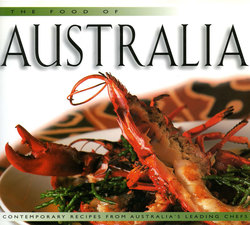Читать книгу Food of Australia (H) - Wendy Hutton - Страница 11
На сайте Литреса книга снята с продажи.
ОглавлениеNative Australian Food
The rediscovery of ancient indigenous ingredients
by Andrew Fielke
Australia's newest cuisine paradoxically depends upon its oldest ingredients. When white settlers first arrived in Australia a little over two centuries ago, the country's Aborigines—who had inhabited the continent for some 40,000 years—had a remarkable understanding of its natural resources. However, it is in only in the last decade or so that the non-Aboriginal population of Australia has begun to discover its exciting range of indigenous food, not only obvious items such as kangaroo meat but a variety of wild seeds, nuts, fruit and vegetables known to the natives for thousands of years. Ironically, much of this ancient knowledge was in danger of being lost as many Aborigines left their traditional homelands and adopted new lifestyles.
The Aborigines' spiritual bonding with their land and their knowledge of its produce had been handed down from one generation to the next by their legends and stories. The first white settlers in Australia, noting that the natives were not agriculturalists in the accepted sense, dismissed them as simple hunters and gatherers. It has since been discovered that the Aborigines irrigated some areas of land, regulated the undergrowth and encouraged re-growth and genetic diversity by practicing controlled burning of the vegetation. Certain abundant food resources were actively managed and maintained. Seeds of fruits were often scattered after eating, and when eggs of the magpie goose were taken, a few nests were always left untouched. In South Australia, the Aborigines stored excess live fish from their catch in special traps.
Aboriginal rock paintings in the Northern Territory show an emu and a lizard, both of which would have been roasted over a fire before being eaten.
Most foods were eaten raw, but some required special treatment such as roasting or pounding and leaching in running water to remove harmful toxins. Some foodstuffs were cooked, with witchetty grubs, kangaroos, smaller mammals, crabs, birds and fish being roasting over a fire. Wattle and Kurrajong seeds were roasted on red-hot coals, ground to a flour, mixed with water and baked to make a nutritious damper or seed cake.
The recent discovery of indigenous ingredients by non-Aboriginal Australians was made possible largely by Vic Cherikoff, a research scientist at Sydney University, who was the first person to commence commercial collection and distribution of a range of native foods through his then fledgling company, Bush Tucker Supply Australia, in 1987. His company, and others like South Australia's Creative Native Australian Industries, distribute a wide range of native ingredients. From the handful of Australian chefs who initially took up the challenge of incorporating Australian native foods into modern and conventional recipes, there is now an ever-increasing acceptance of, and interest in, such ingredients.
The range of fruits, herbs, spices and nuts available has increased considerably, with responsible companies ensuring the sustainability of such wild foods through the practice of ecologically sound farming. Such companies also grow and market Australian native food plants for sale to commercial produce growers and home gardeners, and some also manufacture a range of gourmet food products made from the plants and fauna species. At the same time, there has been a proliferation of emu, yabby and barramundi farms.
Today's Australians have the unique good fortune to be able to use fruits, nuts, seeds, herbs, tubers, vegetables and animals just as they were some 40,000 years ago, unmanipulated by man through genetic engineering or selective breeding.
A dragon lizard ready for the fire. A wide variety of seeds were also roasted on red-hot coals before being ground to make a nutritious flour.
Restaurants like Adelaide's Red Ochre Grill are helping to introduce Australia's age-old bush foods to a wider audience, and the consistent success and international attention over the years demonstrates that the concept of a creative indigenous cuisine is far more than just a fad. Native foods are slowly but surely being integrated into Australian cuisine, although it is unlikely that large numbers of Australian restaurants will become dedicated "bush food" restaurants. Young Australian chefs now have the opportunity to use Australia's oldest ingredients to develop a fresh and innovative style of cuisine limited only by their imagination.
